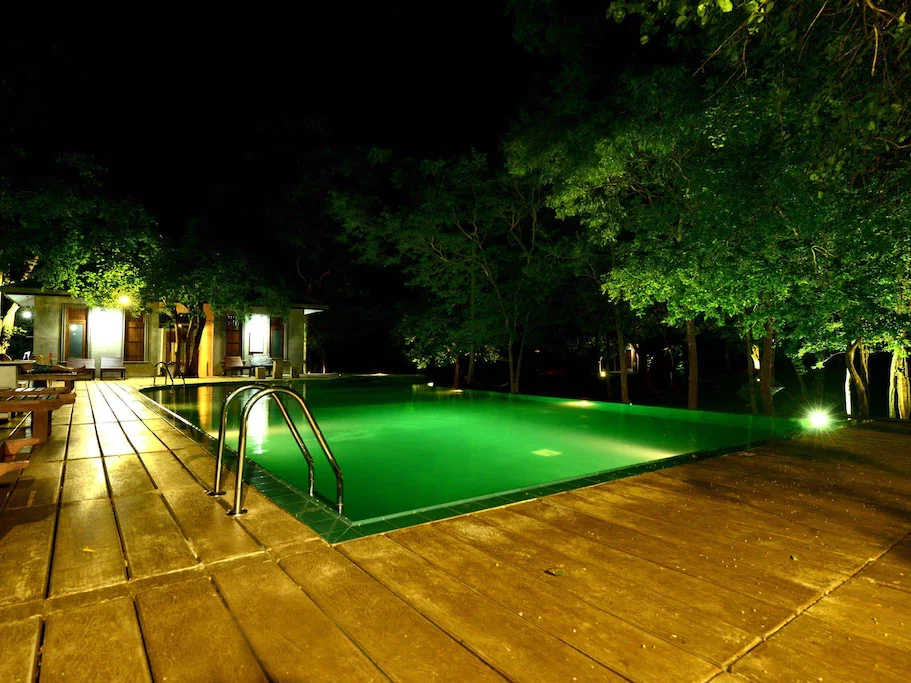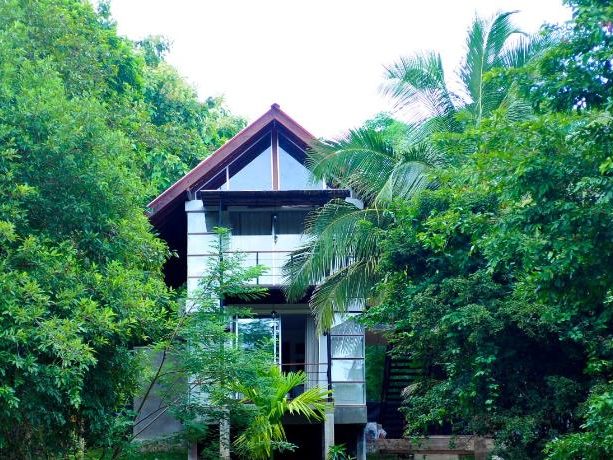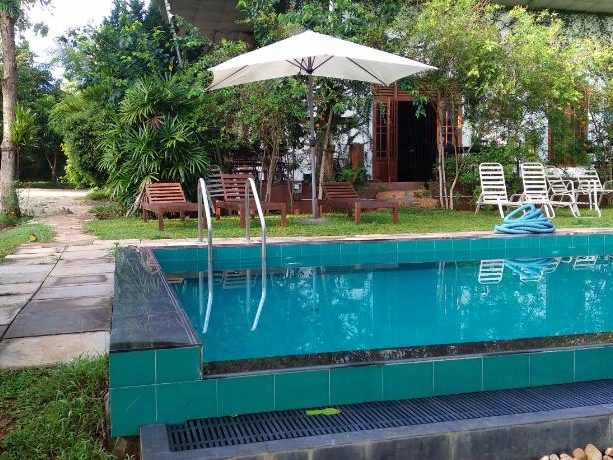A trip to Sri Lanka is not complete if you don’t go on a Safari!
Also see: Sri Lanka Travel Cost – Budget Breakdown
Safaris are one of the best things to do in the country and you would be surprised by how amazing and diverse nature is here. You can expect to see beautiful elephants, leopards, bears, and a ton of different birds coexisting in the wild.
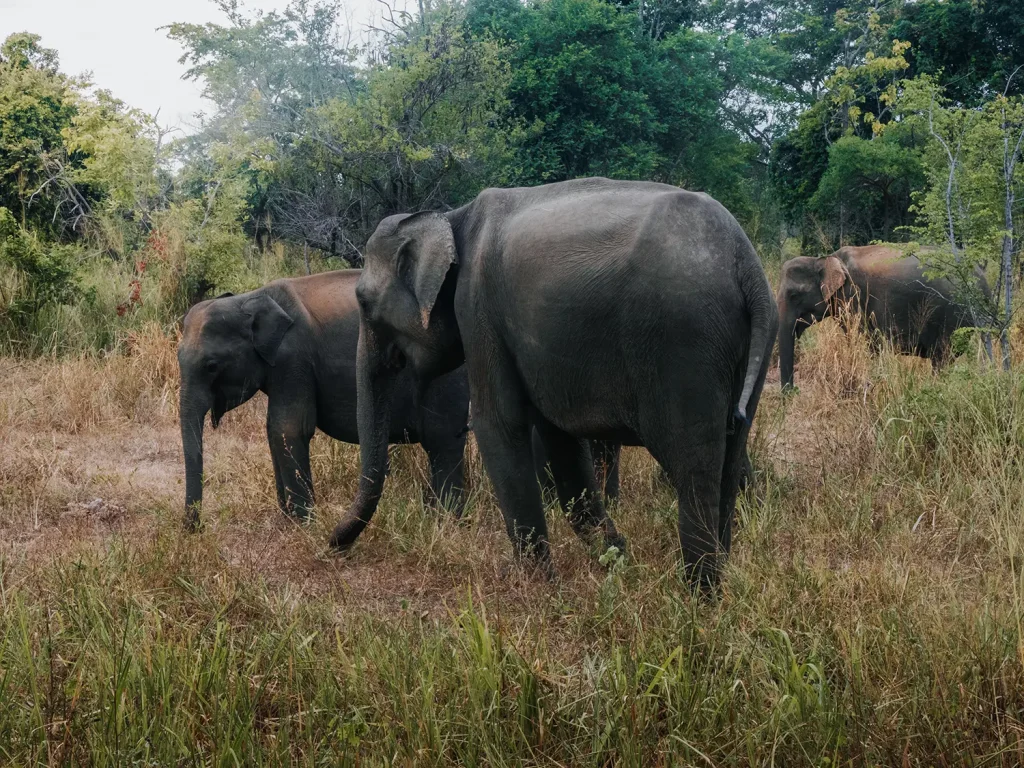
With 22 National Parks in Sri Lanka, it can get quite overwhelming trying to decide which Safari to go to, so we figured it would help a lot to create this guide covering everything you need to know to choose the right safari for you!
Disclaimer: All Photos in this Blog Post were taken by us at Habarana Eco Park.
Most Popular National Parks
Let’s start by taking a look at the most popular National Parks for safaris in Sri Lanka:
Yala National Park
The most popular and well-known! Yala is the second-largest national park in Sri Lanka and it has the highest density of leopards in the world. The chances of seeing lots of elephants are also very high here.

Yala National Park – Pros and Cons
PROS
- It’s a great option for families!
- If you want to see lots of elephants and don’t mind the crowds, then this is the one for you!
CONS
- It is very popular so it gets filled with jeeps, making the chances of seeing leopards slimmer
- It is closed during drought season (1st of September to the 15th of October)
Yala National Park – Costs
For all of the parks, you will find Luxury, Mid-Range, and Budget Safaris. The Luxury and Mid-Range usually include one or more nights in a tent within the jungle with breakfast, dinner under the stars, and of course, the half-day guided safari and the occasional nature trekking.
The budget options are the simple Half-Day (3-5 hours) or Full-Day (8-12 hours) Safaris, which include pick up and drop off from your hotel.
Half-Day Safaris in Yala usually cost around €35-50 and Full-Day Safaris cost around €85-120.
Mid-Range to Luxury Safaris usually starts at €200 a night and can go all the way up to €1000 a night for All-Inclusive Resorts.
Some of the best Mid-Range options are:
Some of the best Luxury options are:
Wilpattu National Park
The largest national park in Sri Lanka! It is famous for its natural pools of water that give a real sense of wilderness to it. If you don’t fancy the crowds from Yala, then this is the best option for you. It is very quiet and it’s only 30 minutes away, by tuk-tuk, from Anuradhapura.

Best time to visit Wilpattu is between February and October although this safari option is great for all seasons as they bring different types of animals. Here you can spot elephants, sloth bears, leopards, water buffalos, and mugger crocodiles.
Wilpattu National Park – Pros and Cons
PROS
- Less known and therefore less crowded
- Easier to spot leopards
CONS
- Some people have had bad experiences with tour companies that don’t provide English-speaking guides. Double-check this before booking as a good guide is essential for a safari!
- Although it IS easier to spot leopards, you will see them usually at a distance, so make sure to bring your binoculars.
Wilpattu National Park – Costs
Half-Day Safaris at Wilpattu National Park usually cost around €35 while Full-Day Safaris cost around €160. Safaris here typically include pickup from your hotel in Anuradhapura.
Mid-Range to Luxury Safaris usually starts at €100 a night and can go all the way up to €1100 a night for All-Inclusive Resorts.
The best Mid-Range option is:

Some of the best Luxury options are:
Udawalawe National Park
With more than 500 elephants, this is the perfect place to spot them! It’s not as crowded as Yala and you can visit it all year round (the best time to visit is between November to March though). Udawalawe is located just 4 hours from Colombo and they have an Elephant Transit Home dedicated to looking after abandoned calves within the park. It is truly every elephant lover’s dream!
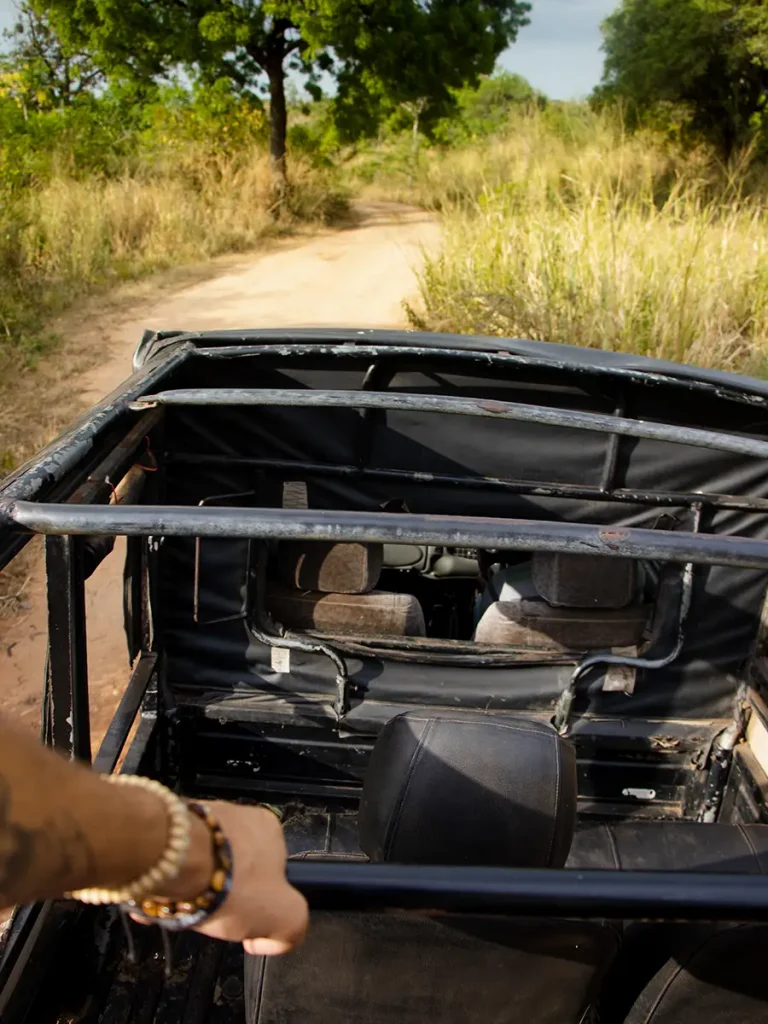
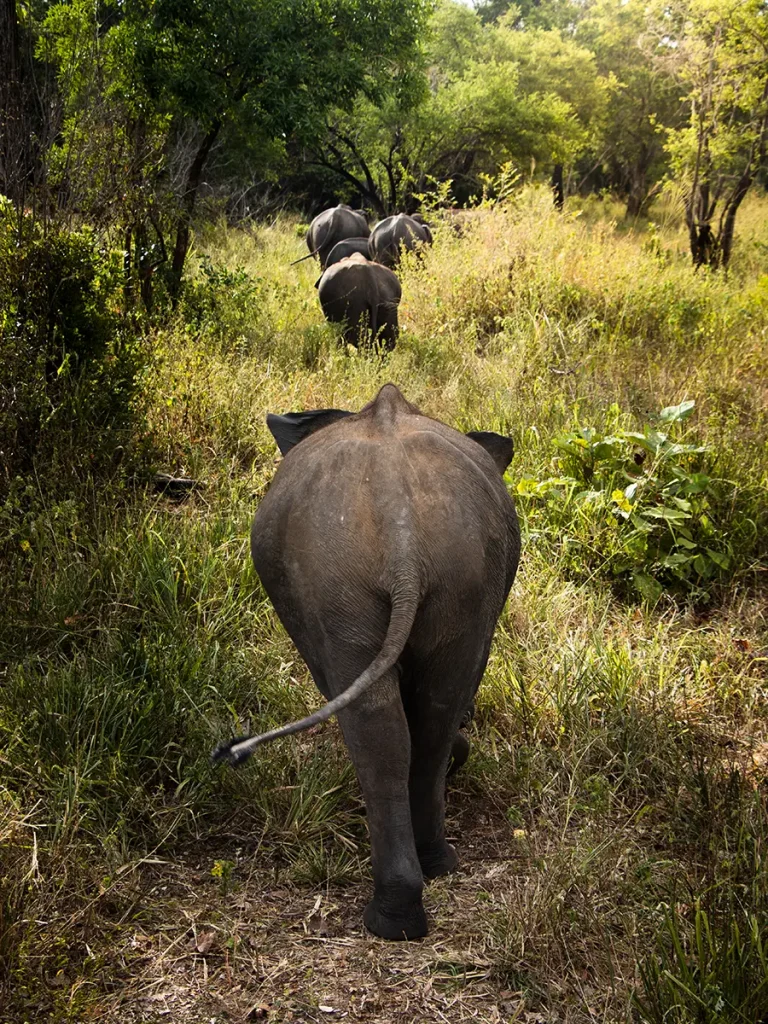
Udawalawe National Park – Pros and Cons
PROS
- Easier to spot Elephants and Elephants’ babies here
- Cheaper than Yala
CONS
- Fairly popular so can get crowded
Udawalawe National Park – Costs
Half-Day Safaris at Udawalawe National Park usually cost around €25-30 while Full-Day Safaris can cost anything between €45-120. Safaris here typically do not include pickup from your hotel, instead, you may have to meet at the Park Entrance.
We couldn’t find any Mid-Range hotels that offer a Safari included in the stay but we did find some good ones at around €40-60 a night where they organize good Safaris upon request. We curated a few with the best reviews here:
The best Luxury option here is:
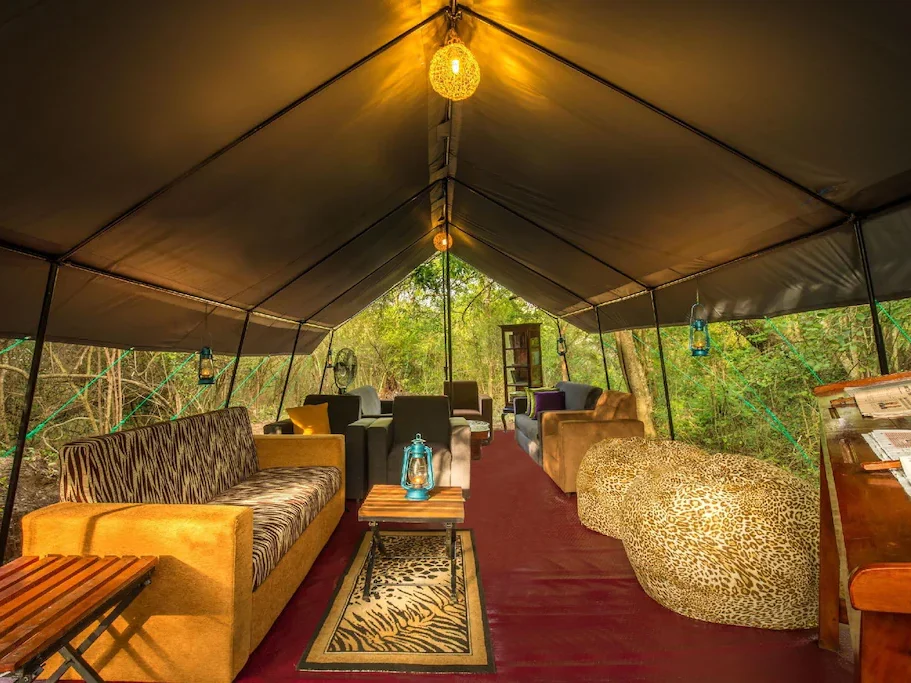
Minneriya National Park
Located in the dry zone, near Sigiriya, this is a good option if you don’t want to go too far just for a safari. Here you can see elephants, lots of monkeys and over 25 species of butterflies!
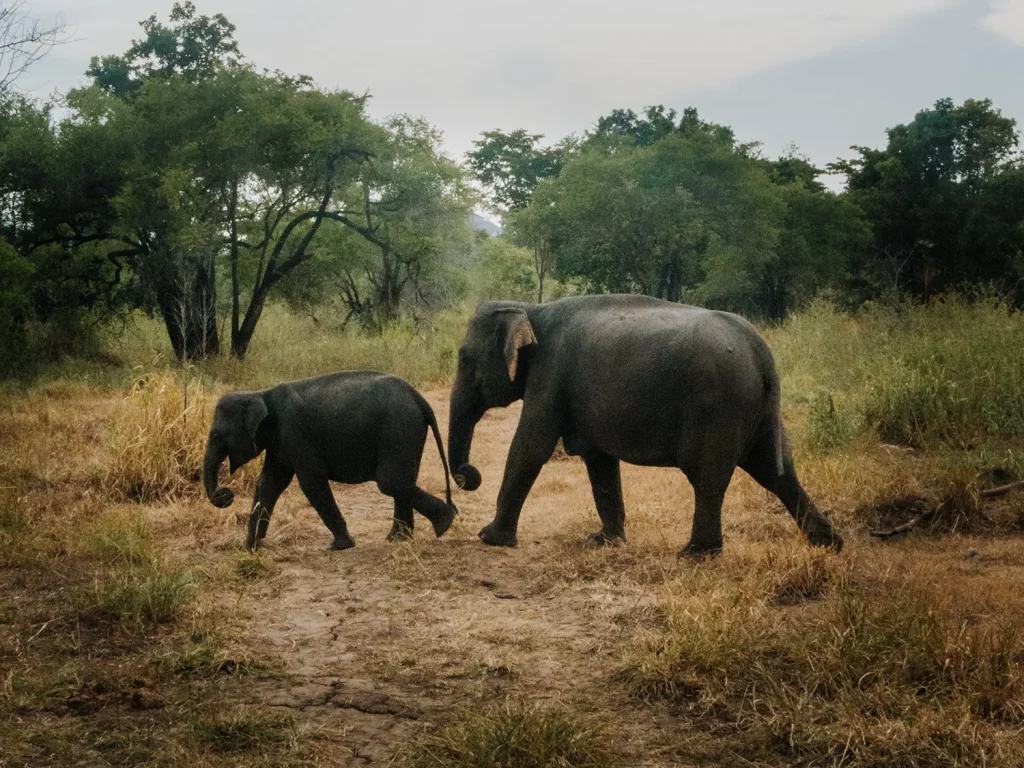
Minneriya also hosts one of the most famous wildlife spectacles in Southeast Asia. Known as “the Gathering”, more than 200 elephants come together at Minneriya’s ancient reservoir to socialize! August and September is the best time to visit to experience these phenomena.
Minneriya National Park – Pros and Cons
PROS
- Fairly popular but not as crowded
- Easier to spot Elephants and Elephants’ babies here
- Cheaper than Yala
CONS
- Elephant spotting only happens between May and September
Minneriya National Park – Costs
Half-Day Safaris at Minneriya National Park usually cost around €25-30 while Full-Day Safaris can cost anything between €50-160.
Least-known National Parks for Safari in Sri Lanka
Bundala National Park
The perfect option in Sri Lanka for birdwatchers! It is an important wintering ground for migratory birds and home to almost 200 different species of birds. You should know that spotting bigger animals in this park is much harder, with afternoon safaris having a better chance of spotting elephants.

The best time to visit Bundala National Park is between September and March and the early morning safaris are the best to spot birdlife.
Bundala National Park Entrance Fee: $10 USD (paid in rupees) + Vehicle fee of 250 rupees + Service Charge of $8 USD + 15% tax.
Kumana National Park
One of the finest bird sanctuaries in the country, Kumana National Park is home to a massive 200-hectare natural mangrove swamp where thousands of birds migrate every year to nest and breed. You can also spot elephants, deer, and water buffalo here.
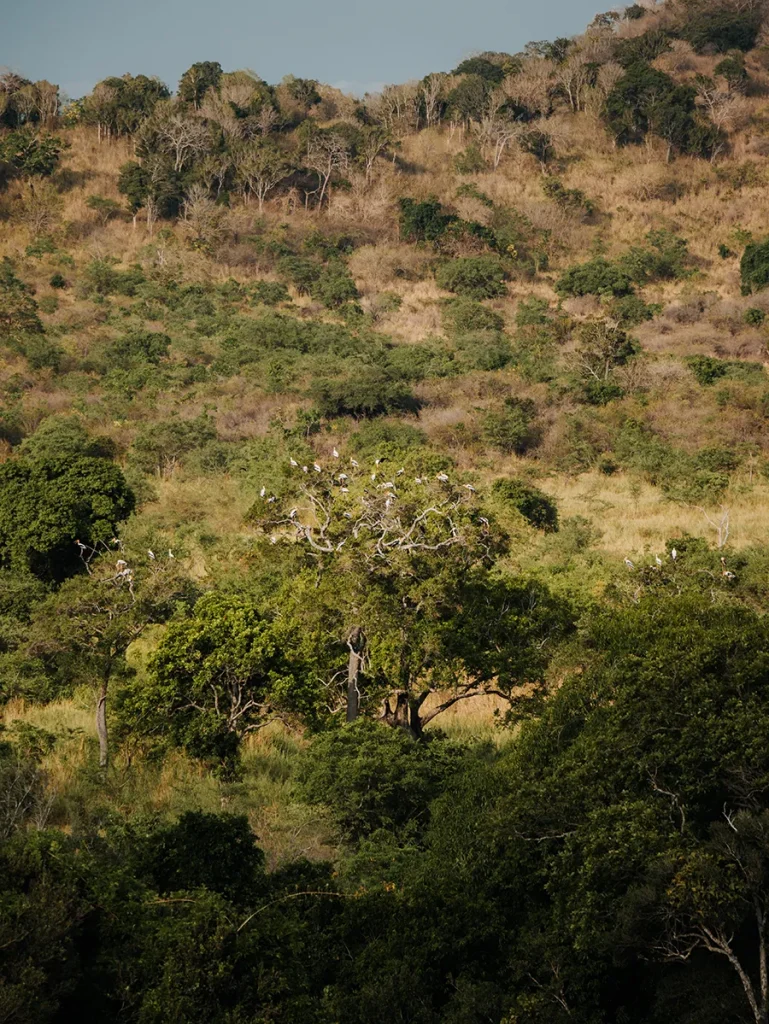
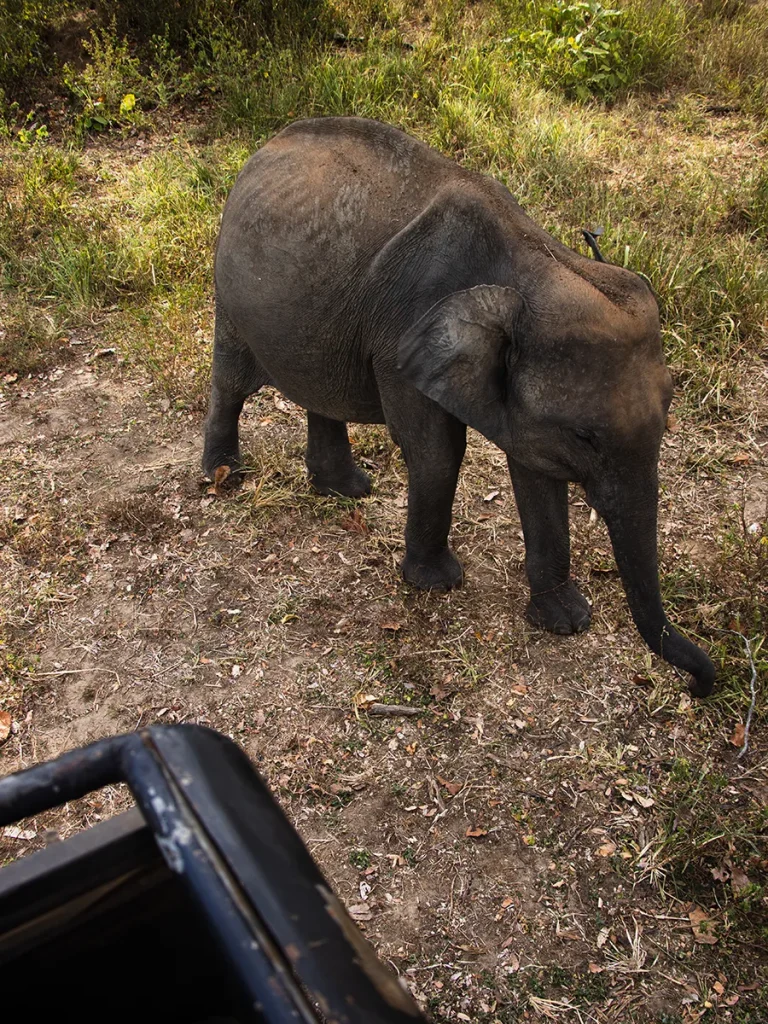
Located near Arugam bay, the nicest thing about this park is that you can do a tuk-tuk safari before even getting to the official entrance – on your own or with a tuk-tuk driver!
The best time to visit Kumana National Park is between Mid-January and June, with the best sightings happening between Mid-January and April.
Kumana National Park Entrance Fee: the latest update online is $15 USD (paid in rupees) + taxes, but we do recommend calling 1919 (government information center) for the latest ticket prices.
Wasgamuwa National Park
Protected and isolated by large rivers on its boundaries, the Wasgamuwa National Park was created by the government as home to displaced wild animals. Located in central Sri Lanka, the park is the closest to the cities of Kandy and Polonnaruwa.
This often-overlooked park is great for Elephant spotting! Here you can see large herds of Elephants and also a great variety of birds. Wasgamuwa is still far off the tourist track and it’s very likely you’ll have the park to yourself when doing a safari here.
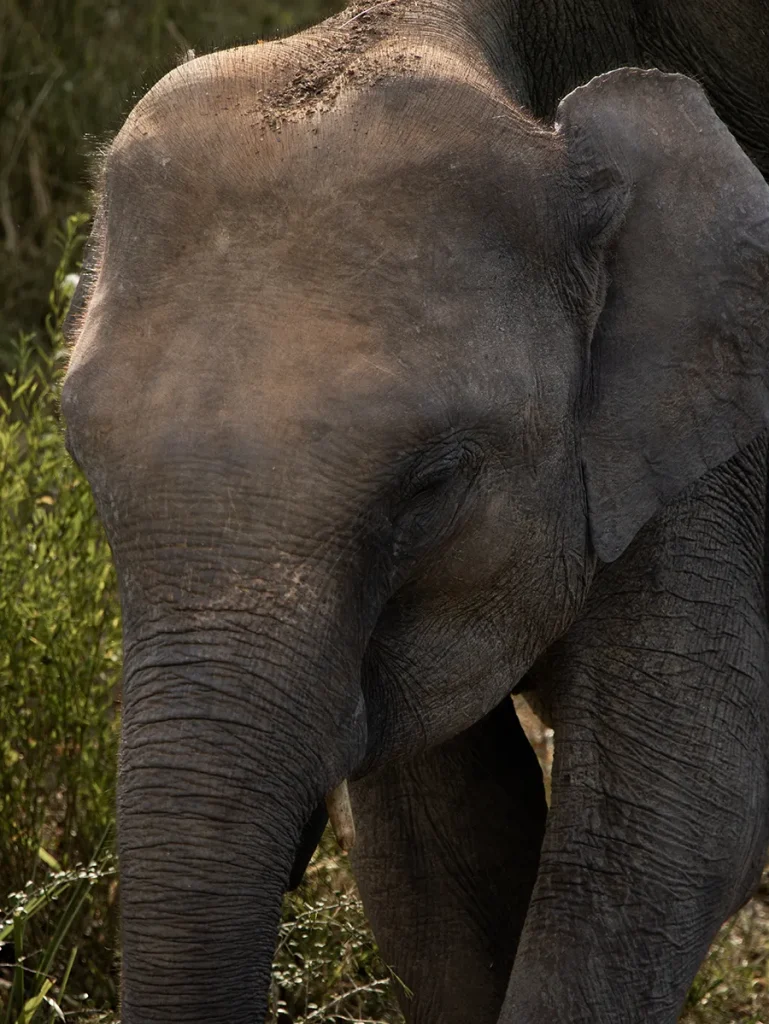
Accommodations around the park are limited though, with Kandy being the best option to base yourself on for a tour of the park. Only a few options are available close to the park, with the best one being the tents of Explorer by Mahoora (Luxury). You can also camp in the park for one or two nights on all-inclusive options.
Wasgamuwa National Park Entrance Fee: the latest update online is $10 USD (paid in rupees) + group fee + taxes, but we do recommend calling 1919 (government information center) for the latest ticket prices.
Habarana Eco Park
Probably the least known of all of the safaris options in the country! The best time to visit the park is from late May to July when the elephants are still roaming this area before heading to the neighboring Minneriya National Park.
Habarana Eco Park was the one we did when visiting Sri Lanka, and before getting to Habarana, we had no idea this park even existed. We went in late July 2022 and were lucky enough to spot a herd of around eight wild elephants and babies (not much, but the guide said he’d no hopes of spotting elephants whatsoever that day so we felt pretty lucky!).
It’s a good option if you’re on a budget and visiting in late May, but it comes with the risk of seeing no elephants. For us, it was an awesome experience!
We organized our tour with our guesthouse (Habarana New Star Homestay) and it cost us only €20 each with the entrance fee included. It might have been a promotional price because of the crisis and the low chances of spotting elephants in late July, but we were aware of and accepted the risk. The guide was really nice and knowledgeable too, but it was Bruno who actually spotted the herd of elephants for us!

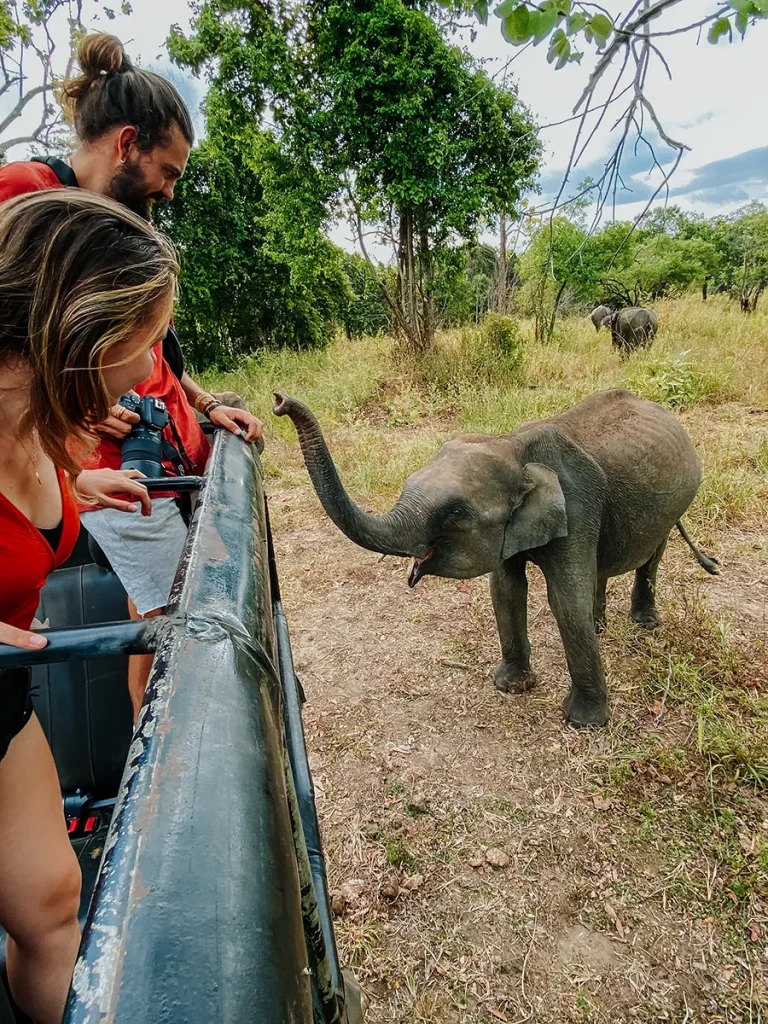
The Bohemian Traveler did the same tour in 2013 but from Dambulla. They did it in late May and paid $50 for the jeep (up to 6 people), but also had to pay an additional $15 per person for the entrance fee and taxes. So prices might depend on the season.
Sri Lanka National Parks Entrance Fee
It is important to note that in most cases, the entrance fee to the park is not included in the Safari Tour, although the Group Fee and VAT should be included. The payment is made in local currency at the entrance of the park or directly to your tour guide once he picks you up at the hotel.
As of September 2022, the government of Sri Lanka has announced that the entrance fee to all Category 1 National Parks for foreigners (excluding SAARC Countries) has increased from USD 15 to USD 25 per adult and USD 8 to USD 15 per child. The rates will also vary per season, as you can see in the table below:
| Peak Season | Off Peak | ||||
|---|---|---|---|---|---|
| Daytime Visit | Overnight Stay | Daytime Visit | Overnight Stay | ||
| Foreigner | Adult | 25 USD | 50 USD | 20 USD | 40 USD |
| Child | 15 USD | 20 USD | 10 USD | 20 USD | |
| Member of SAARC Countries | Adult | 20 USD | 40 USD | 15 USD | 30 USD |
| Child | 10 USD | 20 USD | 8 USD | 16 USD |
Note: *Category 1 National Parks: Yala National Park, Horton Plains National Park, Udalawale National Park, Minneriya National Park, Pigeon Island National Park, Wilpattu National Park, Kaudulla National Park, Yala Region VI (Lunugamvehera) National Park and Adam’s Bridge National Park.
All Parks Table Comparison
To make your life easier, here’s a table comparison between all of the Parks:
| National Park | Pros | Cons | Half-Day Safari $* | Full-Day Safari $* | Base Town | Best Time to Visit |
|---|---|---|---|---|---|---|
| Yala | • Great option for families • Lots of elephants • Wide range of animals | • Very crowded • Fewer chances of spotting leopards • Closed during drought season | $35-50 | $85-120 | Yala, Tissamaharama, or Kirinda. | February to June |
| Wilpattu | • Less known and therefore less crowded • Easier to spot leopards | • Some tour companies don’t provide English-speaking guides | $35 | $160 | Hunuwilgama, Nochchiyagama, or Anuradhapura | February to October |
| Udalawale | • Easier to spot wild Elephants and their babies | • Fairly popular so can get crowded | $25-30 | $45-120 | Udawalawe or Ambilipitiya | November to March |
| Minneriya | • Easier to spot wild Elephants and their babies • Home to “the Gathering” phenomena | • Elephant spotting only happens between July and September | $25-30 | $50-160 | Habarana, Sigiriya or Polonnaruwa | July to September |
| Bundala | • It’s a bird sanctuary | • Fewer chances of spotting bigger mammals | $20-45 | $85-120 | Tissamaharama | September to March |
| Kumana | • It’s a bird sanctuary | • Fewer chances of spotting bigger mammals | $20-45 | $60-160 | Arugam Bay | Mid-January to June |
| Wasgamuwa | • Larger chances of spotting big herds of elephants | • Isolated location • Lack of accommodation near the park | $25-30 | $60-160 | Kandy and Polonnaruwa | November to May |
| Habarana Eco Park | • Good price | • Fewer chances of spotting Elephants | $10-30 | – | Habarana, Sigiriya or Polonnaruwa | Late May – July |
*Prices stated here DO NOT include the entrance fee to the National Parks.
Sri Lanka Safari – FAQ
How to find an ethical wildlife Safari in Sri Lanka?
Due to the lack of regulations, many tour operators don’t practice responsible tourism in Sri Lanka and might chase animals or show you chained animals during safaris. To avoid this type of operator, keep an eye out for the following red flags in the Safari Reviews:
- Mentions of drivers chasing wildlife
- Mentions of drivers running down other jeeps to be the first in line
- Mentions of drivers getting close to the animals instead of the animals approaching the vehicle (which happens!)
- Mentions of baiting or feeding animals
You can also let your guide know in advance that you are not comfortable chasing or feeding animals.
Should I Book The Safari Ahead Of Time?
If you’re traveling in peak season or if you don’t like haggling, booking online and ahead of time might be a good option for you. Unfortunately, locals tend to charge more from tourists, and by booking online you know exactly what you’re getting for your money.
And if you don’t feel like booking in advance, or if you’re backpacking and making decisions as you go, our main recommendation would be to stay at guesthouses! All of the guesthouses we stayed at had the most honest and kind people who helped us with everything we needed – including letting us know what is a fair price for the activities we wanted to do.
What should I wear on a Safari in Sri Lanka?
Safari attire should blend with the natural surroundings, and white or bright-colored clothing is not recommended (Nick absolutely did not know about this lol). For late afternoon or early morning safaris, a lightweight cardigan or pullover is recommended. Closed shoes are also advised.
What should I bring on a Safari in Sri Lanka?
- Sunblock
- Sunglasses
- Hat
- Insect repellent
- Handheld or Head torches
- Binoculars
- Camera and accessories







